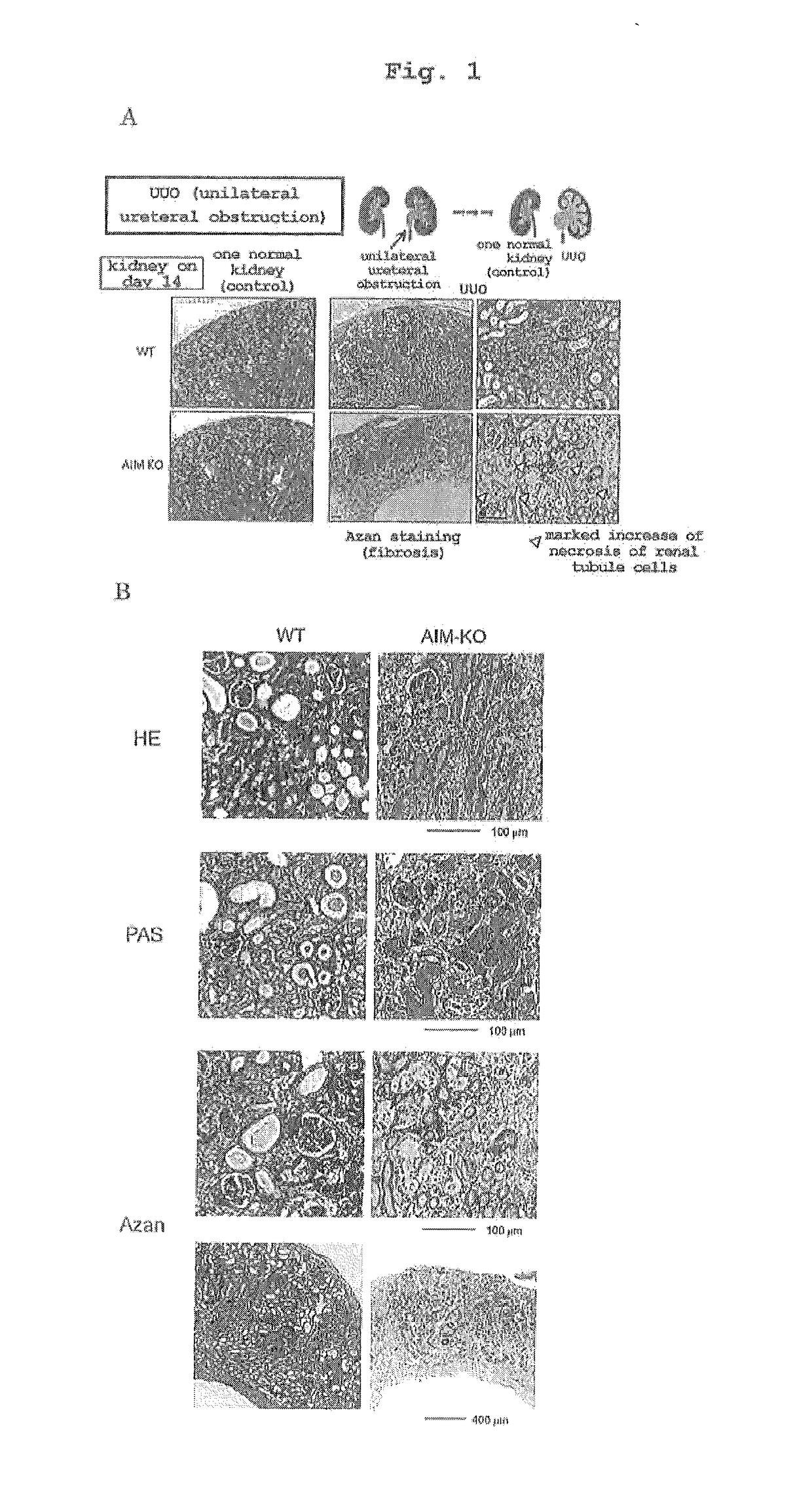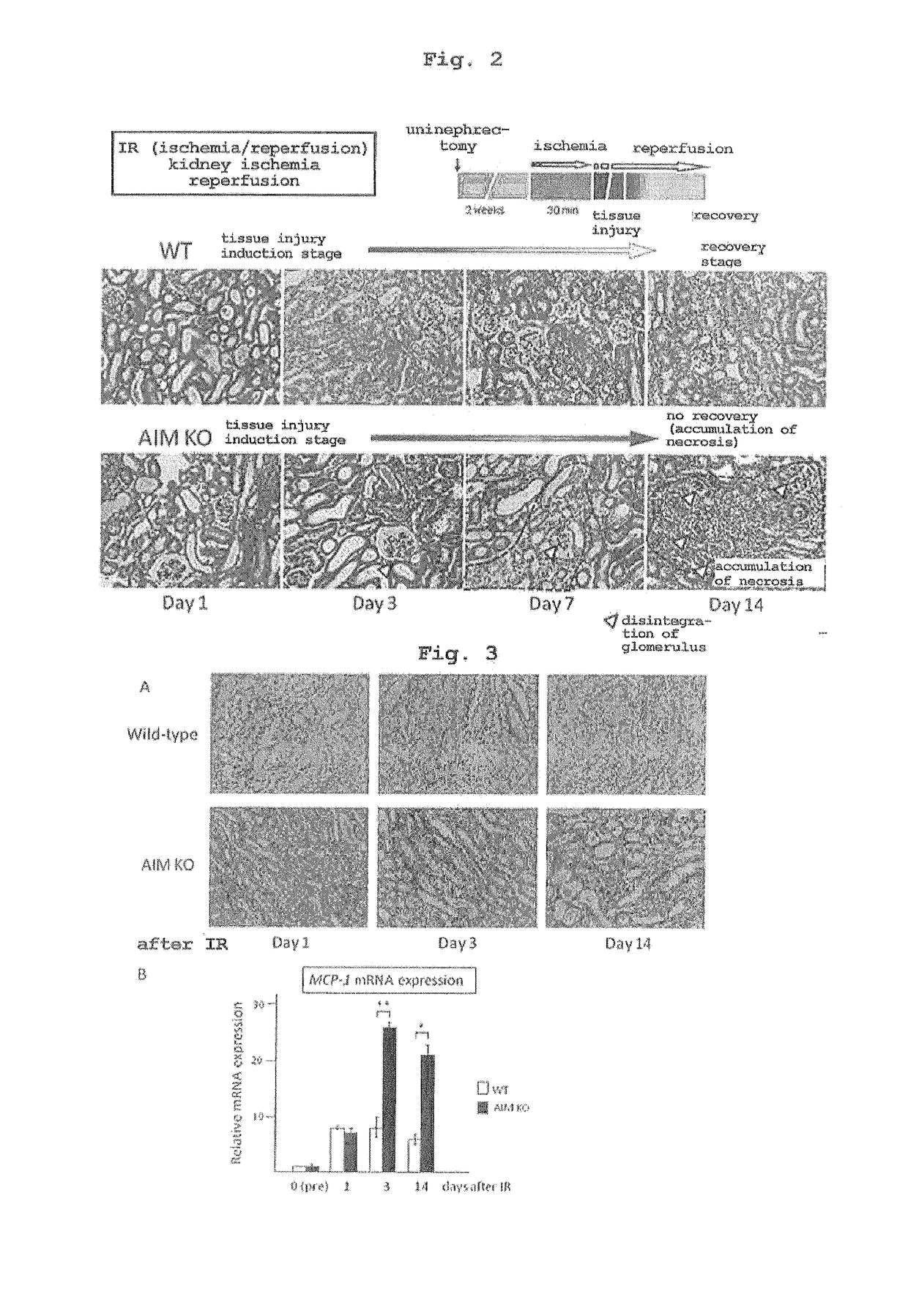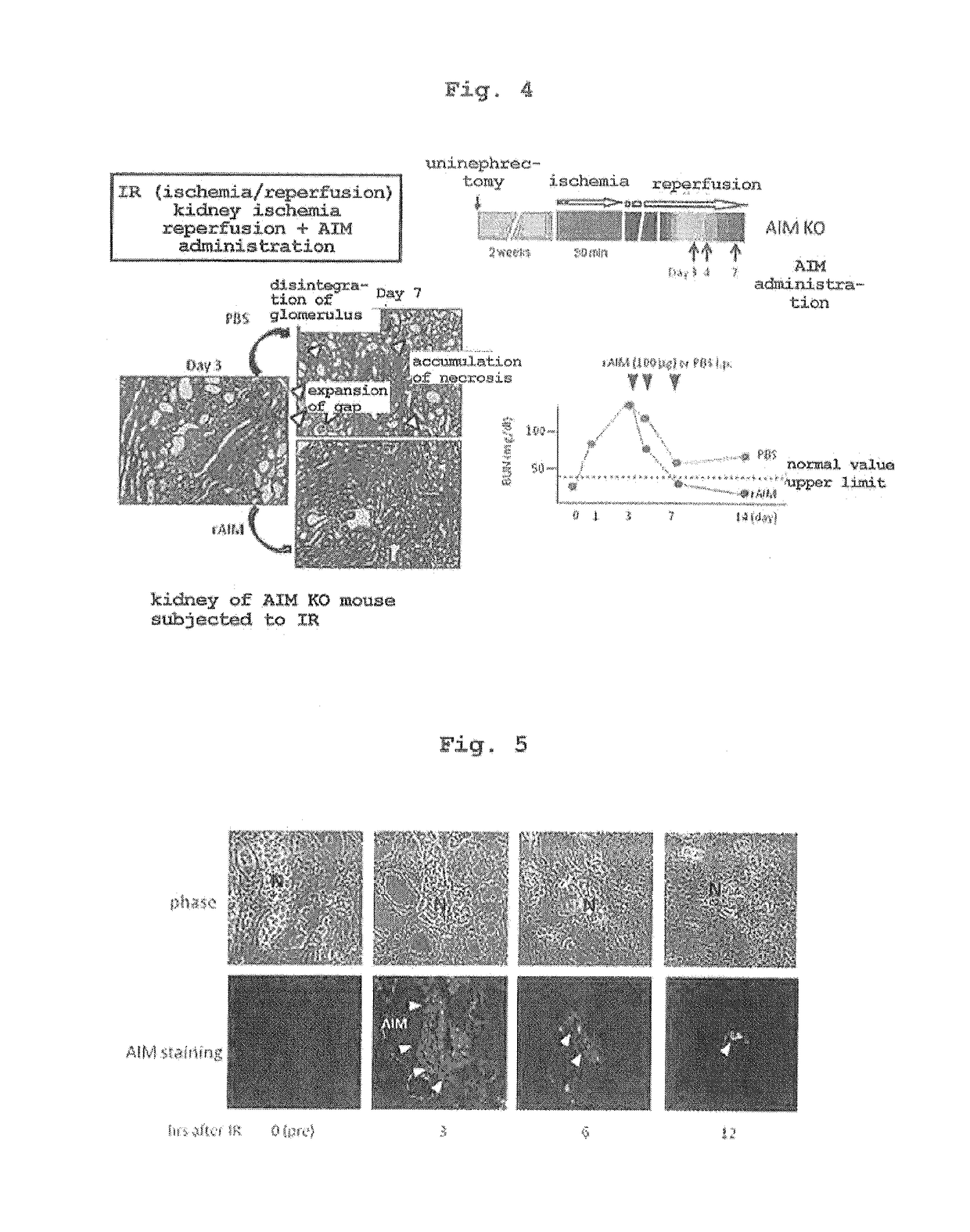Preventive or therapeutic agent for kidney disease
a technology for kidney disease and treatment agent, applied in the field of prophylaxis or treatment for kidney diseases, can solve the problems of high mortality, high long-term hospitalization and high mortality, and serious problems for patients' qol and medical economy, and achieve the effect of prophylaxis or treatment of kidney diseases
- Summary
- Abstract
- Description
- Claims
- Application Information
AI Technical Summary
Benefits of technology
Problems solved by technology
Method used
Image
Examples
example 1
on of Progression of Chronic Renal Failure or Renal Fibrosis by AIM
[0247]One of the frequently-used kidney diseases models using animal is a unilateral ureteral obstruction (DUO) model. In this case, unilateral ureter obstruction induces gradual necrosis of renal tubule and glomerulus in the kidney parenchyma subjected to obstruction, and subsequent inflammation and fibrosis, and finally, functional disorder of the kidney. AIM knockout mouse (AIM-KO) and wild-type mouse (WT) were each subjected to UUO and progress was observed (n=6 for each) (FIG. 1A). The structure of normal kidney was not different at all between WT and AIM-KO. However, when UUO kidney on day 14 was subjected to simultaneous fiber staining by Azan staining and hematoxylin staining, WT showed spreading fibrosis, but a considerable number of glomeruluses and renal tubules still maintained a normal structure, and many renal tubules were non-necrotic. In contrast, AIM-KO showed accumulation of necrotic renal tubule ce...
example 2
on of Progression of Acute Renal Failure (Up to Day 7) to Chronic Renopathy (Becoming Chronic Renal Failure) (Day 14) by AIM
[0249]Another kidney disease model is a transient kidney ischemia / reperfusion (IR) model. Transient kidney ischemia / reperfusion involves isolation of one of the kidneys in advance, obstruction of the renal artery in the remaining kidney to induce ischemia, and release of obstruction 30 min later to allow for reperfusion of the blood flow. This transient ischemia causes progression of necrosis of renal tubule along with mild fibrosis for about 3 days, due to which kidney function is degraded. AIM knockout mouse (AIM-KO) and wild-type mouse (WT) were each subjected to IR and progress was observed (FIG. 2). In WT, after degradation of kidney function, necrotic cells were removed, non-necrotic renal tubules rapidly divided, and almost normal renal tubular structure was recovered 14 days later. Along therewith, the kidney function became normal. In AIM-KO, while ini...
example 3
on of Prolonged Inflammation (Renopathy Becoming Chronic) after Acute Renal Failure by AIM
[0250]The transient kidney ischemia / reperfusion (IR) performed in Example 2 was applied to wild-type mouse (WT) and AIM knockout mouse (AIM-KO), and postoperative infiltration of inflammatory macrophage was observed by immunostaining of macrophage marker F4 / 80 (FIG. 3A). On day 3 postoperation, AIM KO mouse showed clearly-promoted F4 / 80 positive macrophage infiltration as compared to WT. On day 14 postoperation, WT showed reduced macrophage infiltration, but AIM KO mouse showed further aggravation. It was clarified by quantitative RT-PCR experiment that, along with the progress of macrophage infiltration, expression of MCP-1, one of inflammatory cytokines, similarly increased significantly in the kidney of AIM KO mouse (FIG. 3B). The experiment was performed with N=6, and similar results were obtained in all mice.
PUM
| Property | Measurement | Unit |
|---|---|---|
| concentration | aaaaa | aaaaa |
| concentration | aaaaa | aaaaa |
| concentration | aaaaa | aaaaa |
Abstract
Description
Claims
Application Information
 Login to View More
Login to View More - R&D
- Intellectual Property
- Life Sciences
- Materials
- Tech Scout
- Unparalleled Data Quality
- Higher Quality Content
- 60% Fewer Hallucinations
Browse by: Latest US Patents, China's latest patents, Technical Efficacy Thesaurus, Application Domain, Technology Topic, Popular Technical Reports.
© 2025 PatSnap. All rights reserved.Legal|Privacy policy|Modern Slavery Act Transparency Statement|Sitemap|About US| Contact US: help@patsnap.com



